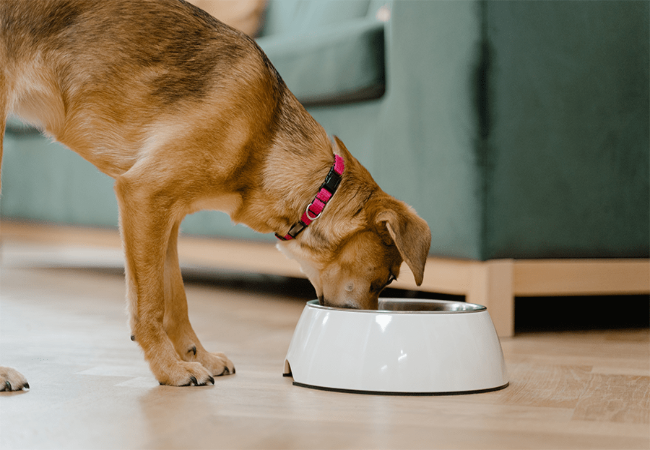A Vet’s Guide: When to Switch From Puppy to Adult Food 2025 🐶🍽️

In this article
A Vet’s Guide: When to Switch From Puppy to Adult Food 2025 🐶🍽️
By Dr. Duncan Houston BVSc
Hello! I’m Dr Duncan Houston BVSc, veterinarian and founder of Ask A Vet. Feeding your puppy the right nutrients at the right times is critical. Knowing **when to transition** to adult food ensures healthy growth, bone development, and long-term vitality. Let’s break it down, vet-approved style. 🩺🐶
1. Puppy vs Adult Food: What’s the Difference?
Puppy food is formulated with higher protein, fat, calcium, phosphorus, and crucial nutrients like DHA for growth and brain development—according to AAFCO guidelines. Large-breed puppy formulas have moderated calcium & fat to reduce skeletal issues.
Adult food, by contrast, balances nutrients for maintenance—roughly 18% protein, 5.5% fat, with various minerals and vitamins.
2. Growth Stage & Development Needs
Puppies need significantly more energy per pound—up to 2× adult requirements initially, tapering as they grow. This supports muscle, bone, and organ development.
3. When Is the Right Time to Switch?
By Breed/Size 🐕🦺
- Small breeds (≤25 lb): Switch at ~9–10 months.
- Medium breeds (25–50 lb): Around 12–14 months.
- Large breeds (>50 lb): Wait until 14–24 months to support slower skeletal maturity.
By Size Completion ✅
Another simple metric: switch when your pup reaches ~80% of expected adult weight.
Additional Factors
- Spay/neuter: Reduces calorie needs—might require earlier switch or portion reductions.
- High activity: Sport or working pups may stay on growth diets longer.
4. Risks of Switching Too Early or Too Late
- Too early: Nutritional deficiencies, poor growth, bone health risks.
- Too late: Excess calories leading to obesity, joint disease, and unnecessary nutrient excess.
5. Choosing the Right Adult Food
Pick AAFCO-approved products from trusted brands (Hill’s, Royal Canin, Purina). Consider:
- Protein ≥18% & fat ≥5.5%
- Added joint, skin, or gut support (glucosamine, probiotics).
- Preferences for kibble vs wet—each has pros and cons.
6. Best Transition Method
Gradual Introduction (7+ days)
Mix adult food, increasing by ~20% per day to minimize GI upset.
- Day 1: 20% adult / 80% puppy
- Day 2: 40% / 60%
- Day 3: 60% / 40%
- Day 4: 80% / 20%
- Day 5: 100% adult
If GI upset occurs, slow the mix or revert for a couple of days.
Quick Method (≤2 days)
For healthy adults, small meals of adult food only. Resume gradually if problems occur.
7. Feeding Frequency Over Time ⏰
- Up to 6 mo: 3–4 meals/day
- 6–12 mo: Shift to 2–3 meals/day.
- After 12 mo: 2 meals daily suffice
8. Avoiding Nutritional Pitfalls
- Monitor weight & BCS regularly—avoid free feeding.
- Track calcium/phosphorus ratios—especially in large breeds.
- Avoid raw diets due to nutrient inconsistency.
- Ongoing vet checks—especially during growth transitions.
9. Support with Enrichment & Tools
Make feeding enriching and healthy:
- Ask A Vet App: Personalized nutrition guidance, growth charts, portion advice.
10. Vet’s Real-World Case
Case: Luna, a 60‑lb Labrador mix
Luna reached 48 lb (~80%) at 13 mo. We transitioned her via the 5‑day method. She stayed happy—with no GI issues—and maintained a lean, athletic body condition. Switching on time supported her skeletal development and energy levels through adolescence.
11. Actions & Checklist
- ✔ Track weight to 80% adult weight
- ✔ Choose a quality AAFCO‑approved adult food
- ✔ Slow‑transition over 5–7 days (or quick for mature dogs)
- ✔ Adjust feeding frequency gradually
- ✔ Monitor BCS and adjust portions
- ✔ Consult Ask A Vet for diet-specific advice or growth concerns
📌 Final Thoughts from a Vet
The right time to move to adult food depends on your dog's breed, rate of growth, and activity. Following these vet-approved steps—tailored nutrition, slow transitioning, and monitoring—paves the way for lifelong health, and Ask A Vet, you're giving your pup the best start in their adult life. 🐾❤️






